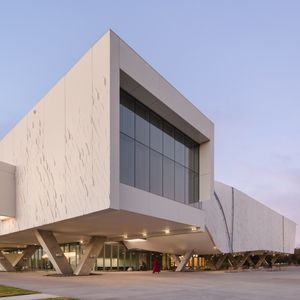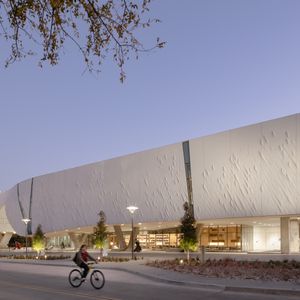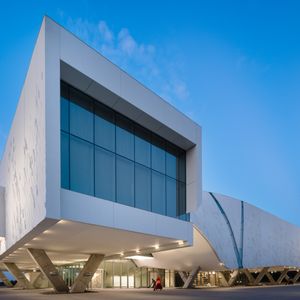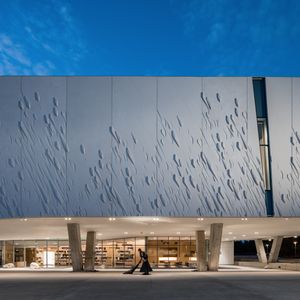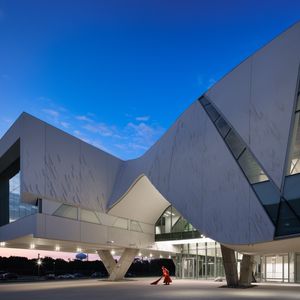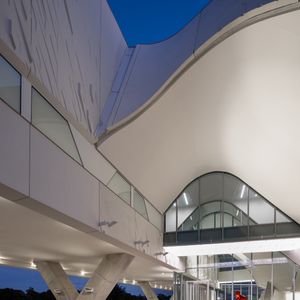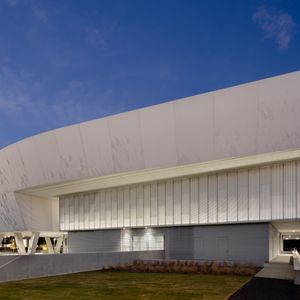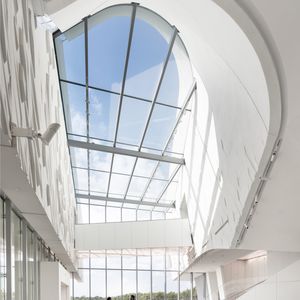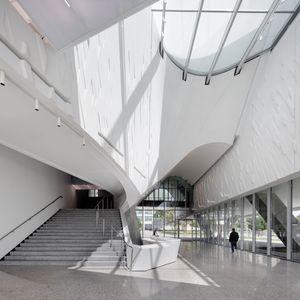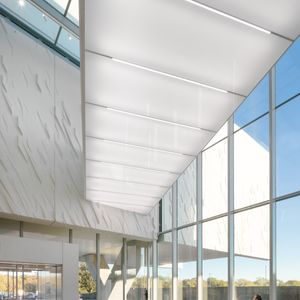Crow Museum of Asian Art
Crow Museum of Asian Art
The Edith and Peter O’Donnell Jr. Athenaeum, a new cultural district, encompasses 12 acres on the main campus of the University of Texas at Dallas. The district will be home to three new cultural buildings. The largest of the three, and the first to be built, is the Crow Museum of Asian Art. The museum serves as the cornerstone of the Athenaeum and is the museum’s second location; the first location is in the downtown Dallas Arts District.
The museum offers ample space for exhibitions and/or new acquisitions with its nearly 60,000 SF. The two-story structure also houses a new conservation lab, reading room, seminar rooms, office, and storage spaces.
Large windows at the end of gallery spaces allow for adequate natural light as well as complement the architectural precast concrete interior and exterior façades. The building envelope is composed of glass and 163 three-dimensional architectural precast panels, featuring a seemingly random pattern that is both logical and repetitive. This strategic approach, developed by Morphosis over the years, was previously employed in the designing of the Perot Museum of Nature and Science, another collaborative design effort between Morphosis and GATE. The mix design used to create the precast panels consists of 100% white cement that was blended with white aggregate and given a medium sandblasted finish that would expose the aggregate and add a shimmering aspect to the façade.
Morphosis engaged GATE in the early design phase of the museum, taking advantage of real-time feedback on constructability and cost which optimizes the design and construction process. The precast panels offered a cost-effective solution that requires virtually no maintenance while ensuring efficient assembly. The precast allowed three-dimensional quality sculpting that helped with the overall massing and moods within the building, enhancing the visitor experience.
“By embracing our construction and fabrication partners early in the design process, we’re able to receive real-time feedback on constructability and cost, which optimizes the design and construction process.”
- Arne Emerson
Partner, Morphosis
Repeated and overlapped patterns can be achieved by utilizing multiple casts on the same formliner, resulting in visually complex façades. The façade of the Crow Museum of Asian Art appears intricate, but the underlying system is quite systematic. There were many challenging aspects of the complex form geometry – some panels required Rhino modeling software to generate custom CNC foam shapes. The variation in panels ranges from complex flat to unique panel shapes. Only about half of the panels were installed in a traditional configuration. Panel geometry and jointing required coordination between GATE, Morphosis, The Beck Group, and Datum Rios.
Precast was chosen for the museum project because it can be quite malleable, which works for the types of geometries and complex forms used in the architect’s design. Working with Morphosis from the beginning of the museum’s design phase provided efficient planning that has resulted in a dramatic space that plays with light and shadows and showcases not only the structure but also the art that is displayed within. The architectural precast panels add an abundance of texture to the museum and are themselves a piece of art.
AWARDS
- (2024) PCMA Best of Precast: Best Architectural
- (2024) PCI Design Awards: Sidney Freedman Craftsmanship Award
- (2023) Dallas Architecture Forum: Civic, Cultural and Public Art Looking Forward Award
RELATED STORIES
- Premier Hospitality International: December 2024: The Crow Museum of Asian Art
- PCI Journal: January-February 2025: Crow Museum Receives Sidney Freedman Craftsmanship Award
- Ascent: Summer 2024: Crow Museum of Asian Art
VIDEOS
LOCATION
Richardson, TX
ARCHITECT
Morphosis


